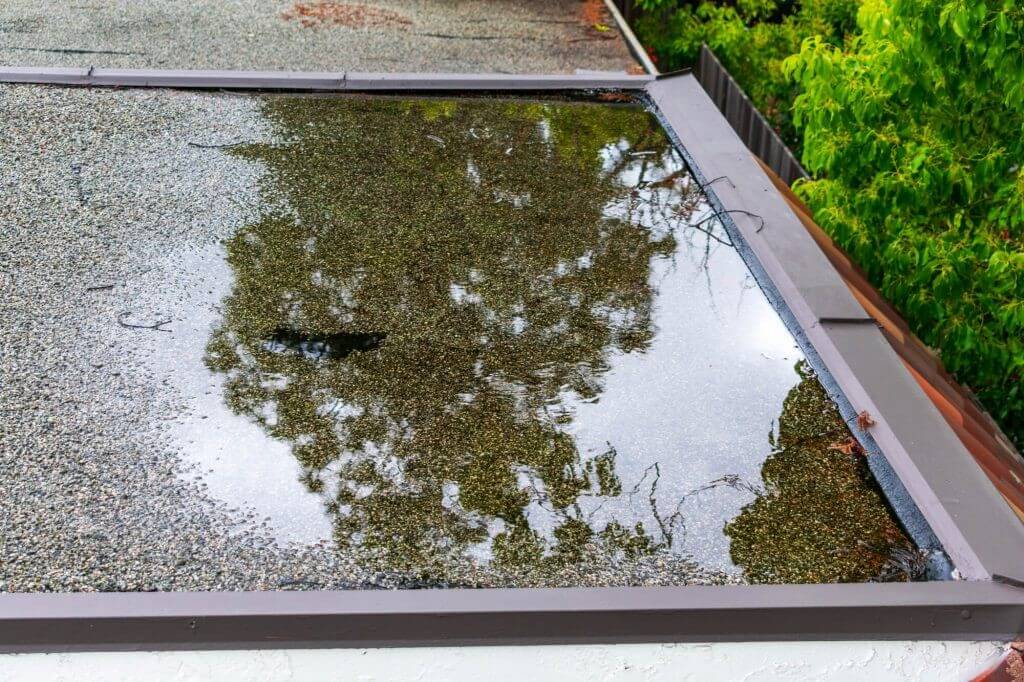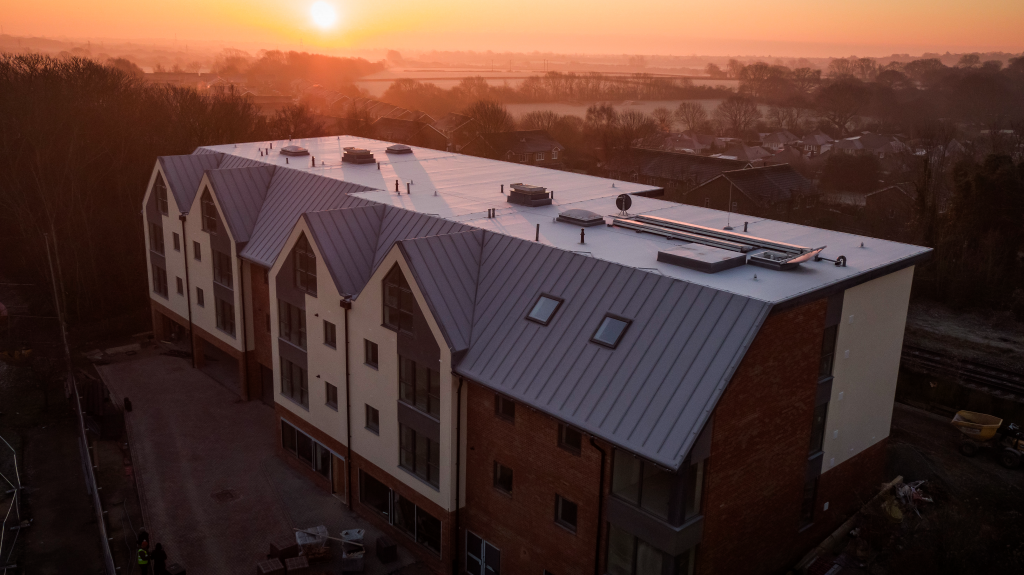Ponding is the accumulation of water on flat roofs, which can pose additional risks to the integrity of the waterproofing membrane and, ultimately, the structure of the building. Although our membranes are, when installed correctly, designed to withstand temporary standing water, it’s imperative to adopt practices that facilitate efficient water drainage as per the guidance of BS 6229:2018 ‘Flat roofs with continuously supported flexible waterproof coverings – Code of Practice’. The key to preventing ponding lies in proper design, quality materials, and a thorough understanding of the factors involved.
Proper Design and Slope
The foundation of a ponding-free flat roof begins with its design and slope. During the design phase, ensure that the roof has a fall that allows water to naturally flow towards designated drainage points. The recommended minimum finished fall (i.e taking account of construction tolerances, permitted deviations and deflection under load, and, unless justified by more detailed structural analysis, to account for deflections/settlement), for a flat roof is 1:80 (0.7⁰). An effective drainage system combined with the right slope will prevent water from pooling. A design fall of 1:40 is recommended to achieve the finished falls.
Quality Drainage Systems
An efficient drainage system is crucial to preventing ponding on flat roofs. There are two primary types of drainage systems: internal and external.
1. Interior Drains: These are placed at the lowest points of the roof, allowing water to flow into a network of pipes that lead to the building’s drainage system. Regular maintenance of internal drains is essential to prevent clogs and blockages.
2. Gutters and Downspouts: Installing gutters and downspouts along the edges of the roof helps channel water off the roof and away from the building’s foundation. Regular cleaning is important to prevent debris buildup that can lead to clogs.
Roofing Materials and Construction
The choice of roofing materials and construction methods can greatly influence the likelihood of ponding. Consider the following factors:
1. Tapered Insulation: Using tapered insulation during the construction of a flat roof can provide the slope. This technique involves varying the thickness of the insulation to create a gradual slope that encourages water to flow towards the drains. Speak to us about our Tapered Insulation Schemes.
2. High-Quality Membranes: Utilise high-quality roofing membranes that resist water penetration. Our POLYDAN and ESTERDAN reinforced bituminous membranes, DANOFORCE cold-applied liquid, and DANOPOL PVC single ply membranes offer complete watertightness upon correct installation.
3. Avoiding Low Spots: During the installation process, ensure that the roofing substrate is properly prepared to avoid low spots or uneven areas that can encourage ponding. Rainwater outlets should be positioned at the points of maximum deflection.
Regular Maintenance
Preventing ponding doesn’t end after the initial construction phase. Regular maintenance is vital to ensure that drainage systems remain clear and effective. BS 6229: 2018 also recommends bi-annual inspections, typically in Spring and Autumn. Here are some maintenance tips:
1. Clear Debris: Regularly remove leaves, twigs, and other debris from gutters, scuppers, and drains to prevent blockages.
2. Inspect Seams , Joints, and Sealants: Inspect the seams, joints, flashings, and sealant applications of your roofing system for any signs of damage or deterioration that could lead to water infiltration.
3. Professional Inspections: Schedule professional inspections to identify and address any potential issues before they worsen.
Continued review and care of the roof will ensure that the lifespan of the waterproofing is maximised.
Proper Usage
The way you use your flat roof can also impact the likelihood of ponding. Avoid placing heavy objects, like planters or HVAC equipment, in areas where water might accumulate. Always be mindful of the distribution of weight on the roof to prevent depressions that can lead to cumulative ponding.
Preventing ponding requires a combination of proper design, effective drainage systems, quality roofing materials, regular maintenance, and careful usage. By implementing these strategies, you can ensure the longevity and functionality of your flat roof while avoiding the pitfalls of ponding. If you need a roof survey or technical advice, don’t hesitate to contact our Technical Team on 0845 074 0553 or uktechnical@danosa.com.


